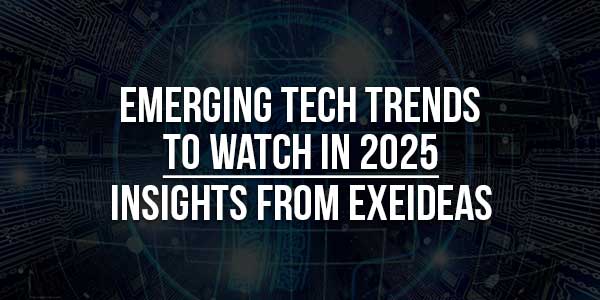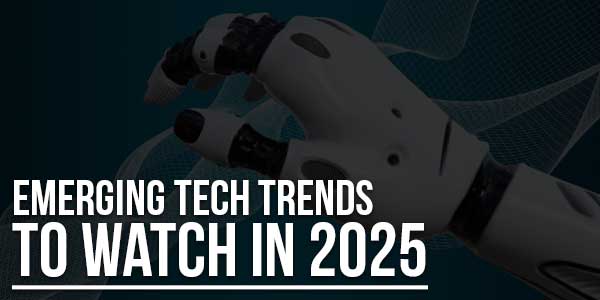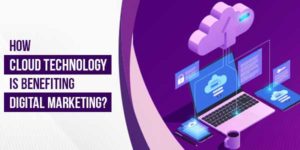
The year 2025 is poised to be a transformative one for the tech industry, driven by breakthroughs in AI, quantum computing, 5G, and sustainable innovation. This article explores five critical technology trends that are expected to shape the global digital ecosystem. From the rise of autonomous AI systems and generative AI tools to the commercialization of quantum computing and the proliferation of private 5G networks, the landscape is rapidly evolving. Each trend is analyzed in terms of its technological advancement, industry impact, and future relevance. The article also discusses how sustainability is becoming a core feature of product design and infrastructure strategy. It emphasizes the importance of businesses staying agile, forward-thinking, and ethically aligned to succeed in this innovation-driven era. Whether you’re a tech strategist, developer, or entrepreneur, this piece offers a deep dive into what’s next and how to prepare for it.
The era of 2025 is destined to become a turning point in the journey of digital technologies. A very fast pace of innovation is going on in every sector from AI-powered workflows to quantum-enabled analytics. As enterprises and consumers tread through this rapidly changing landscape, staying ahead means not only recognizing what is trending, but also comprehending the reasons and ways of integration into real ecosystems. In this article, the author dives deep into the main emerging tech trends that are setting the course of year 2025, and industries that are going to be transformed by these trends.
Table of Contents
Generative AI Reshapes Content, Code, and Creativity
Generative AI is not a surprise anymore in 2025, it has already changed the way we use it as a tool for content creation, software development, product design, and scientific discoveries as well. Consegic Business Intelligence analyzes that generative AI market size is estimated to reach over USD 807.80 Billion by 2032 from a value of USD 37.85 Billion in 2024 and is projected to grow by USD 66.52 Billion in 2025, growing at a CAGR of 36.6% from 2025 to 2032.
These machines have now come up with technology-grade code to develop marketing content that is highly personalized, prepare legal documents, and create biological models for drug discovery.
One of the significant changes is the blending of generative AI with enterprise platforms and IDEs. Co-workers in all spheres, from engineering to HR, are still on the go trying to use AI copilots that will help them continue their workflows at a high speed, go through less repetitive tasks, and thus get an improved output quality. Companies are employing custom-trained models, which are fine-tuned on proprietary data, as one of the solutions to preserve accuracy and limit hallucination issues.
Since generative AI software has moved to the next step and now it is multimodal, it is necessary for companies to introduce a governance-first approach to this. Such issues include content authenticity verification, model auditability, and ethical usage as the main points to solve for trust and compliance of AI-generated outputs.
Artificial Intelligence Becomes Autonomous
Artificial Intelligence in 2025 has transitioned from being assistive to more autonomous systems. Earlier, AI decision-making alone was a limited part of this sector while now it has been extended to AI-led execution. It doesn’t matter if it is a robotic process automation in enterprise backends, AI agents negotiating contracts, or autonomous vehicles navigating smart cities, AI is rapidly moving in the direction of self-governed systems.
Through transformer-based models, edge AI, and AI-as-a-service platforms, businesses can now go for deploying lightweight, scalable, and context-aware models with bare minimum infrastructure. Additionally, multimodal AI models facilitate machines to comprehend inputs coming from text, image, video, and even sensor data simultaneously; hence, human-AI teamwork becomes more natural than ever before.
If enterprises want to remain competitive in 2025, they will have to go beyond trial-and-error and move towards AI productization, impregnating AI into the primary business activities, customer interfaces, and supply chain systems.
Quantum Computing Edges Closer to Commercialization
Quantum computing once was restricted to academic labs and theoretical simulations but now it is approaching commercial viability. 2025 finds quantum-as-a-service platforms occupying a prominent position, leading teams to try quantum-enhanced optimization, cryptography, and complicated simulation jobs.
While most scenarios in quantum computing are still utilizing the classical side of quantum advantage, a kind of synergy of classical and quantum machines is opening ways to breakthroughs in e.g. logistics optimization, drug research, or risk modeling. IBM, Google, and IonQ are sharing resources with each other and their customers in the form of cloud-based quantum accessibility.
Those firms, which move today, to be ready for quantum technology in the future by raising the skill level of their people, or by organizing simulation or collaboration with the quantum cloud, will be in an beneficial position to take advantage of the market as it evolves towards maturity later in the decade.

Private 5G and Edge Networks Power Smart Ecosystems:
From the beginning of 2025 until now it is clear that there has been a boom in 5G private networks, mainly in the industrial sector, healthcare, and large campuses. Compared to public 5G networks, private ones provide ultra-reliable and low-latency connectivity that is more suited for enterprise applications, hence they can be easily associated to autonomous manufacturing, immersive AR/VR training, or real-time equipment monitoring.
This is in tandem with edge computing; therefore, private 5G facilitates the processing of data in real-time or near-real-time, which is imperative for the tasks that need the highest-level response time, such as teleoperation, autonomous drones, or precision agriculture.
Telecom and infrastructure providers are also selling private 5G-as-a-service models, thus enabling medium-sized enterprises to go for a deployment that is hassle-free and does not involve any capital investment. In the times when IoT ecosystems are becoming more data-intensive and more latency-sensitive, private wireless infrastructure will be a necessity at a basic level and not an extra feature.
Sustainable Tech Goes Beyond Greenwashing
Sustainability is not a mere corporate value anymore, it has become an engineering and operational principle. Sustainable tech in 2025 is energy-efficient infrastructure, circular product design, carbon-aware software development, and low-impact data storage.
Innovations that just have started to emerge such as biodegradable sensors, battery-free IoT, and self-powered wearables are becoming more and more commercially viable. Besides that, data centers are implementing liquid cooling, renewable energy grids, and AI-based power optimization that all together help to meet ESG targets without compromising performance.
Regulatory frameworks regarding disclosure of carbon and digital emissions are getting stricter and these changes have implications for businesses who must be more transparent and make efforts to reduce the carbon footprint of their technology infrastructures. To also help with this, software vendors are coming up with eco-efficiency indicators in their instruments, thus enabling developers to make energy-efficient decisions in both software and infrastructure.
In this day and age, to be competitive, it is necessary to be responsible digitally and it also means that the innovation that you are pursuing should have a positive impact on the environment and society, which can be measured.
Conclusion
2025 is a paradigm shift period in technology. AI systems are being empowered with autonomous decision-making, quantum computing is quite close to practical use, private 5G is facilitating deeply interconnected enterprises, generative AI is changing the face of creativity, and sustainability is ingrained in each layer of the tech infrastructure, thus the future is not only quick but also well-planned.
In order to maintain a leading position, companies need to do more than just embrace new technologies; they should also be involved in workforce development, system modernization, and governance model changes. The winners of 2025 will be those who take the initiative, act responsibly, and are continuously driven by innovation.

 About the Author:
About the Author:
















Be the first to write a comment.